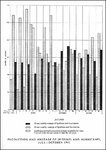fastmongrel
1st Sergeant
First of all, US troops had first stopped the point of KG Peiper and then captured Stavelot behind it, so no supplies got through. Then US troops defeated all German attempts to recapture Stavelot to reopen the supply route of the KG so Peiper decided to give up Stoumont and concentrated his KG at La Glaize. He waited there for help but the other KGs of 1.SSPzD could not get through the US forces, so KG Peiper had no other option that abandon its vehicles and trek through hills to the German lines. Notice that they didn't march along the road they had came, because it was blocked by US troops but sneaked through hills at night. So IMHO KG Peiper's AFVs were lost because of the actions by US forces.
Hit the nail square on the head there Juha

